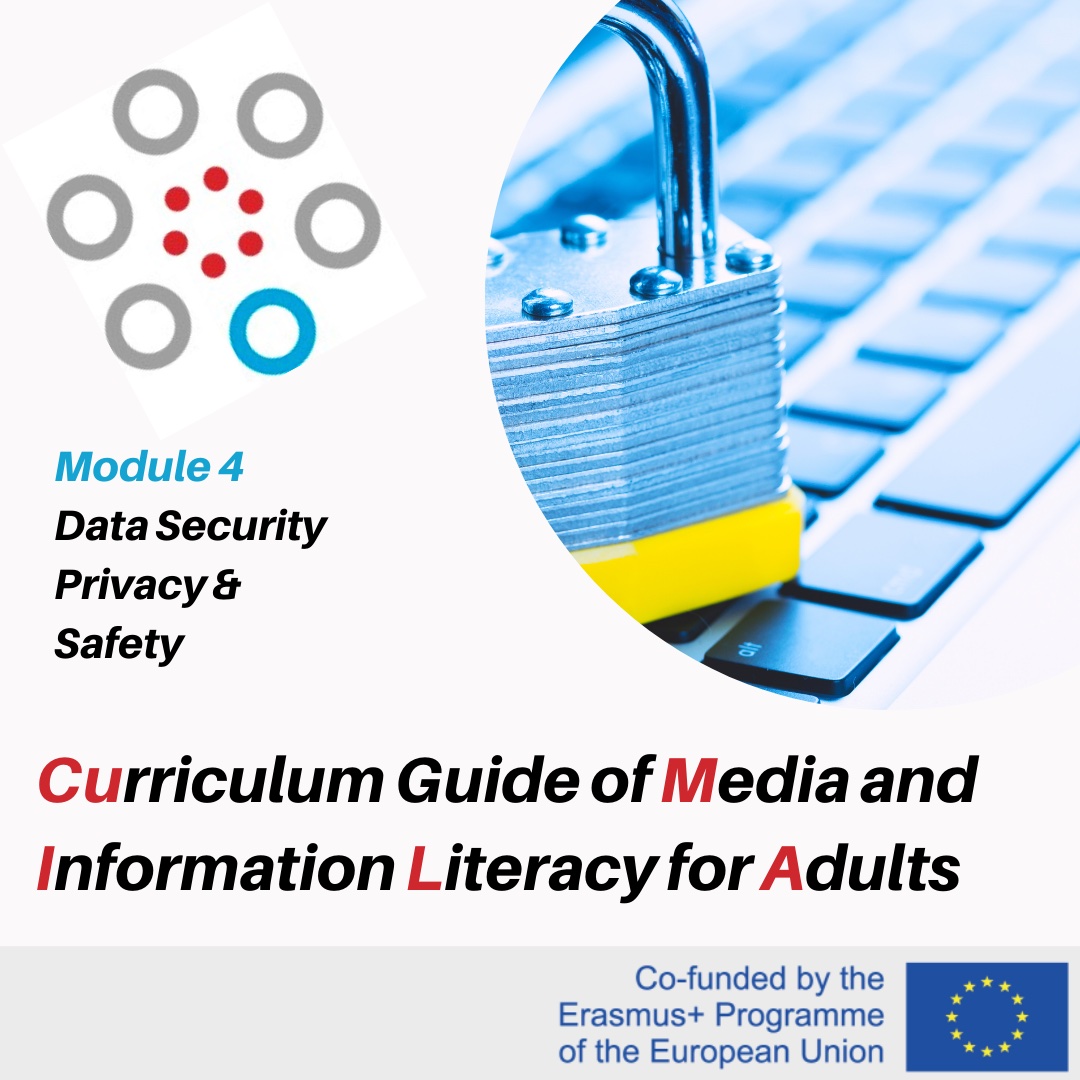At the beginning of the internet age, we used the internet in a manageable way: We read web pages or communicated with colleagues or friends via e-mail. Nowadays, the internet is more often used for more complex activities; we use it as one of our main sources of information, to store and share photos or documents, to shop, to book trips, to sell things, to learn, to communicate with friends and for many other purposes. We do not just read and view content; we create, publish and share our own content.
In doing so, it is important that we protect ourselves, our digital identity and our data. Because we also encounter risks on the internet. These are manifold and can also be assessed differently in terms of their danger level. Ultimately, however, they always represent an attack on our privacy and our data. The dangers range from the unwanted disclosure of our data to deletion and destruction.
One chapter of the CUMILA project deals with the topics of security, privacy and data protection. This is about teaching the basic concepts to enable self-determined and safe use of the internet. It is important to know the risks and their implications. Because if we understand the underlying mechanisms, most risks are avoidable or we can at least minimise them through appropriate behaviour.
Digital identity.
Our identity is unmistakable. In real life, we can prove our identity by means of fingerprints or identity cards. Nowadays, however, everyone also has digital identities through which we identify ourselves on the internet. This can be, for example, a digital signature, an email account or a social media account.
Our digital identities in social media in particular influence the way other people perceive us, because they are linked to what we reveal about ourselves and share with others. It is important that we protect our digital accounts and know methods of identity confirmation and verification.
Challenges of the digital world.
For a long time, when computers entered our lives, viruses were the main risk in dealing with the digital world. Today, third parties try to gain access to our accounts and our data through ever new methods. Viruses, Trojans and other malware have been joined by new risks such as phishing emails or access to our data via app permissions.
In order to use the internet safely, we have to know the risks and learn to control them.
And besides the knowledge of concrete dangers, we also need to be aware of the fact that we leave digital traces and that our data has become an important raw material. “What do I have to hide?” is usually the first reaction to this fact. And certainly individual pieces of information are not decisive in themselves. But when a lot of information is collected over a longer period of time and linked to different data sources, you quickly get a complex picture of a person. This ranges from preferences to their political views. And we need to become aware of this fact and learn to critically question our online behaviour.
My data, my rights.
The business models of many large internet companies are based on offers that are financed by the users’ data. Thus, the question of a possible “ownership of data” is quite justified. Who owns our data and who is allowed to use it?
In the case of personal data that can be clearly assigned to a person, the answer may still be quite simple: These data may only be processed on a legal basis. At the very least, we have a right to know which provider has stored which of our information and what it is used for. This right was enshrined in the European General Data Protection Regulation (GDPR).
All these topics are covered in the CUMILA module “Security, Privacy and Data Protection”.


